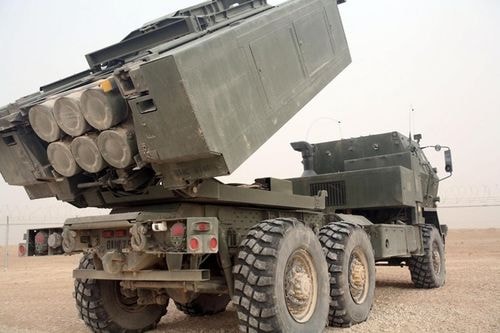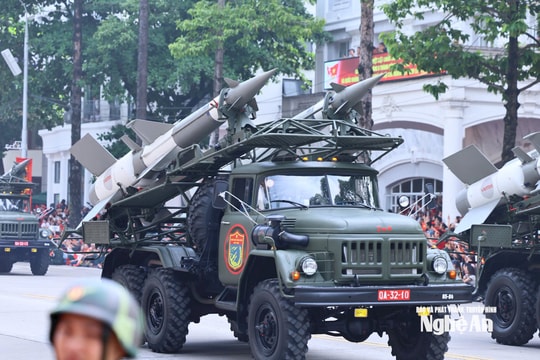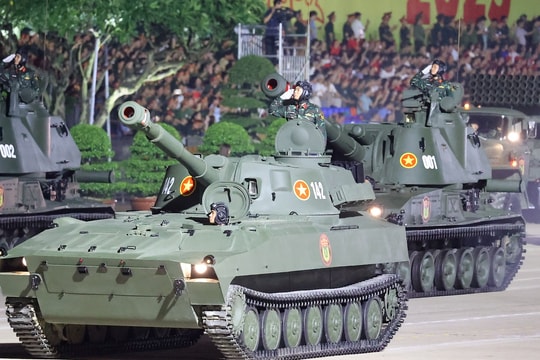The US Marine Corps possesses a series of combat vehicles with a rugged appearance like monsters.
 |
| The US Marine Corps is one of the most mobile military forces in the world. To complete diverse missions, from amphibious assaults to security protection, in addition to the elite of the soldiers, the US Marine Corps also has to rely heavily on a fleet of military vehicles that are considered extremely combat-ready, according to Business Insider. In the photo is a mine-resistant ambush vehicle (MRAP). This is an armored vehicle with a special design that can withstand the destructive power of improvised explosive devices (IEDs) as well as ambush attacks. The reinforced chassis can also withstand explosions, while the steel shell and bulletproof glass help protect the upper part of the vehicle. MRAP has many different versions, weighing 14-18 tons. The price of each vehicle ranges from 0.5 - 1 million USD. Photo: Reuters |
 |
| The Amphibious Assault Vehicle (AVV-7) is a highly mobile tracked vehicle that transports Marines and cargo across hostile territory. It is an amphibious vehicle, capable of both wading in water and operating on land. In this photo, US soldiers operate an amphibious assault vehicle on the coast of San Antonio, Zambales, Philippines, during a joint exercise with the Philippine military called "Shoulder to Shoulder". Photo: Reuters |
 |
| An M1A1 Abrams tank is deployed ashore from a landing craft at White Beach, Marine Corps Base Pendleton, California. The M1A1 Abrams is the main battle tank of the US Marine Corps. Weighing 70 tons and covered in thick armor, and equipped with many modern weapons, the M1A1 Abrams tank is primarily responsible for providing fire support for ground combat forces. Photo: US Marine Corps |
 |
| The Light Armored Vehicle (LAV) is a multi-role vehicle that combines firepower, speed, and maneuverability into a single platform. LAVs can operate both on land and in water. They are typically used for attack, reconnaissance, command and control, and security operations. Pictured, a light armored vehicle participates in a live-fire exercise at Camp Buehring, Kuwait. Photo: US Marine Corps |
 |
| The High Mobility Multipurpose Vehicle (HMMWV) has been in service with the US Marine Corps since the 1980s. It is highly customizable to suit the needs of its customers. The vehicle can be equipped with a variety of equipment depending on the mission it is participating in, from setting up a command and control center to providing medical assistance or transporting TOW anti-tank missile systems. Photo: US Marine Corps |
 |
| ABV is a mine clearance vehicle that clears the way for infantry and other military vehicles to advance. American experts developed it on the chassis of the M1A1 Abrams tank. The vehicle weighs about 72 tons, is 12 meters long, is equipped with a 1,500 horsepower engine, and also has a mine plow, a 50 mm machine gun and a rocket launcher with C4 detonator cord to destroy mines. In the photo, a platoon of armored mine clearance vehicles (ABV) prepares to depart for a mission at Jackson base, Helmand province, Afghanistan. Photo: US Marine Corps |
 |
| The Medium Tactical Armored Vehicle (MTVR) is a vehicle specialized in transporting weapons and soldiers, and can operate in all terrains and environments, including the most toxic places. The vehicle has a payload of 15 tons on the highway and 7 tons on rough terrain. The vehicle has up to 9 different variants, of which the MTVR MAS version is heavily armored, capable of withstanding the blasts of mines or improved explosive devices. The MTVR is also the main transport vehicle for the M777 155 mm lightweight artillery. Photo: US Marine Corps |
 |
| HIMARS is the US Marine Corps' most advanced high-mobility rocket artillery system. They are usually carried on specialized trucks. HIMARS provides fire support to Marine forces within a range of about 64 km, in all weather conditions. Photo: US Marine Corps |
 |
| The Mine Resistant Ambush Protected All-Terrain Vehicle (MATV) is a smaller and faster version of the MRAP, designed to replace the MRAP in certain missions. MATVs have always been the Marine Corps' preferred choice for rough terrain. Capable of operating effectively in a variety of environments, MATVs are often used for command and control, transporting troops, equipment, ambulances, or towing other weapons systems. In this photo, a US Marine sniper is performing a security support mission from a MATV at the National Training Center in California, USA. Photo: US Marine Corps See more: What's in the US military's arsenal |
According to VNE

















